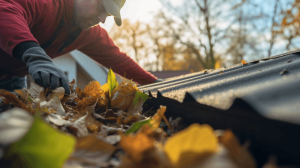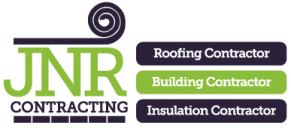A well-maintained roof is crucial for protecting your home from the elements and preserving its structural integrity. Roof leaks can cause significant damage to your property, leading to costly repairs and potential health hazards from mould and mildew.
Understanding the common causes of roof leaks can help you take preventative measures to protect your home and ensure the longevity of your roof.
Roof leaks can arise from various issues, often unnoticed until significant damage has occurred. From weather-related wear and tear to installation flaws, recognising the signs of potential problems can save you time and money.
At JNR Projects, we have created this blog to explore five common causes of roof leaks, providing insights into how to identify and address these issues before they escalate.
Damaged or Missing Shingles
Shingles are the first line of defence for your roof, protecting it from rain, wind, and other weather conditions. Over time, shingles can become damaged or dislodged due to factors such as heavy storms, strong winds, and the natural ageing process.
Damaged or missing shingles expose the underlying roof structure to water infiltration, leading to leaks. Regular inspections, especially after severe weather, can help you identify and replace damaged shingles promptly.
Additionally, shingles may suffer from granule loss, where the protective mineral coating wears away, leaving them vulnerable to UV rays and water penetration. Granule loss often indicates that shingles are nearing the end of their lifespan and need replacement.
Addressing shingle damage early can prevent extensive water damage and maintain the roof’s protective capabilities.

Faulty Flashing
Flashing is a critical component in roofing that seals joints and prevents water from seeping into the roof structure. It is typically installed around areas such as chimneys, skylights, and vents.
Over time, flashing can deteriorate due to factors like poor installation, corrosion, and weathering. When flashing fails, it creates openings for water to enter, leading to leaks.
Faulty flashing often results from improper installation techniques or the use of substandard materials. It is essential to ensure that flashing is installed correctly and inspected regularly for signs of wear and tear.
Replacing damaged flashing and using high-quality materials can significantly reduce the risk of leaks and extend the life of your roof.
Clogged Gutters
Gutters are vital in directing water away from your roof and foundation. When gutters become clogged with leaves, debris, and other obstructions, water can overflow and seep into the roof structure.
This overflow can cause water damage to the fascia, soffit, and even the interior of your home. Regular gutter maintenance, including cleaning and inspection, is crucial to prevent clogs and ensure proper water flow.
In addition to causing leaks, clogged gutters can lead to the formation of ice dams during colder months. Ice dams occur when water freezes at the roof’s edge, creating a barrier that prevents proper drainage.
The trapped water can then seep under the shingles and into the roof, causing leaks and damage. Ensuring your gutters are clear and functional can prevent these issues and protect your home from water damage.

Cracked Vent Booting
Vent booting, also known as pipe booting, is a type of flashing that seals the area around roof vents. Over time, vent booting can crack or deteriorate due to exposure to UV rays, weather conditions, and the natural ageing process.
Cracked vent booting allows water to penetrate the roof, leading to leaks and potential damage to the underlying structure.
Regular inspection of vent booting is essential to identify signs of cracking or deterioration.
If cracks are found, it is crucial to replace the damaged booting promptly to prevent water infiltration. Proper installation and the use of durable materials can help extend the life of vent booting and reduce the risk of leaks.
Improperly Sealed Valleys
Roof valleys are the areas where two roof slopes meet, forming a V-shaped channel that directs water runoff. These valleys are particularly vulnerable to leaks if not properly sealed.
Improper sealing can result from poor installation techniques, ageing, or damage from debris and weather conditions. Water can easily seep through improperly sealed valleys, causing leaks and damage to the roof structure.
Ensuring that roof valleys are correctly sealed during installation is crucial for preventing leaks. Regular inspections can help identify signs of wear or damage, allowing for timely repairs.
Using high-quality sealants and materials can also enhance the durability of roof valleys and protect your home from water infiltration.
Conclusion
In conclusion, understanding and knowing roof leaks are one of the most common causes of roof damage is essential for maintaining the integrity of your home. Among the most frequent culprits are damaged shingles, faulty flashing, clogged gutters, cracked vent booting, and improperly sealed valleys.
Regular inspections and maintenance can help identify these issues early, preventing costly repairs and ensuring your roof remains in good condition.
By addressing potential problems promptly and investing in high-quality materials and professional installation, you can significantly reduce the risk of roof leaks. A well-maintained roof not only protects your home but also enhances its value and longevity.
If you suspect any issues with your roof, seeking professional assistance can provide peace of mind and safeguard your property from water damage.
